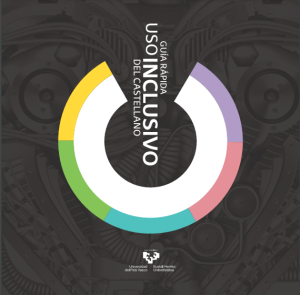Quick guide to using inclusive language in spanish
The main aim of this guide is to encourage debate regarding the legitimacy of using the masculine generic form when the Spanish language offers other, more inclusive alternatives. Continuing on with this line of thought, the guide counters common arguments which defend the masculine generic on the grounds that it implicitly includes the feminine form also.
After presenting the theoretical justification for the use of inclusive language, the most common sexist forms are listed, along with possible non-sexist reformulations (as regards both written format and images). The adequate use of language in terms of respect for racial and functional diversity is also analysed.
- Categories:
- COMMUNICATION AND LANGUAGE
- Skills needed:
- School, Teaching resources



